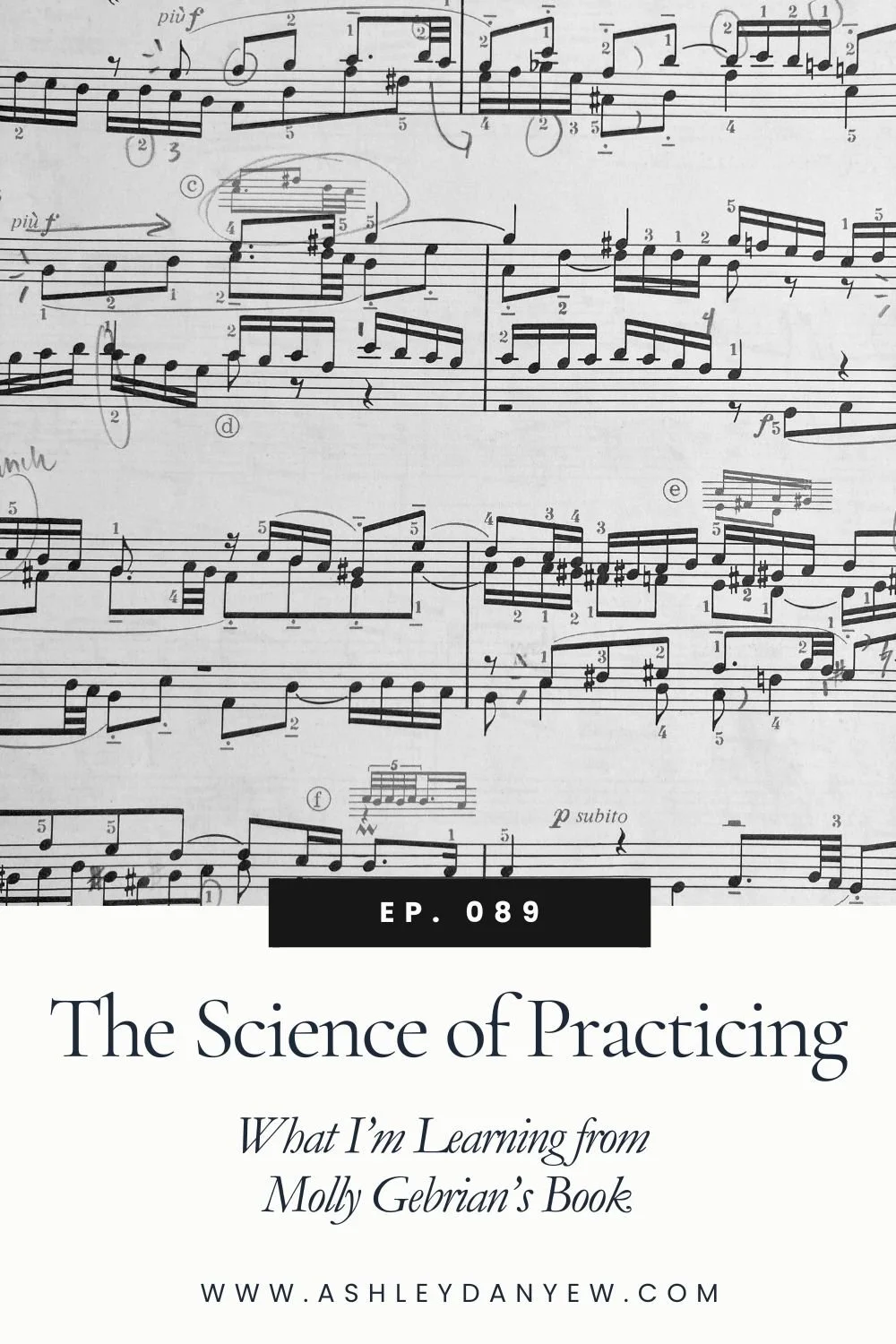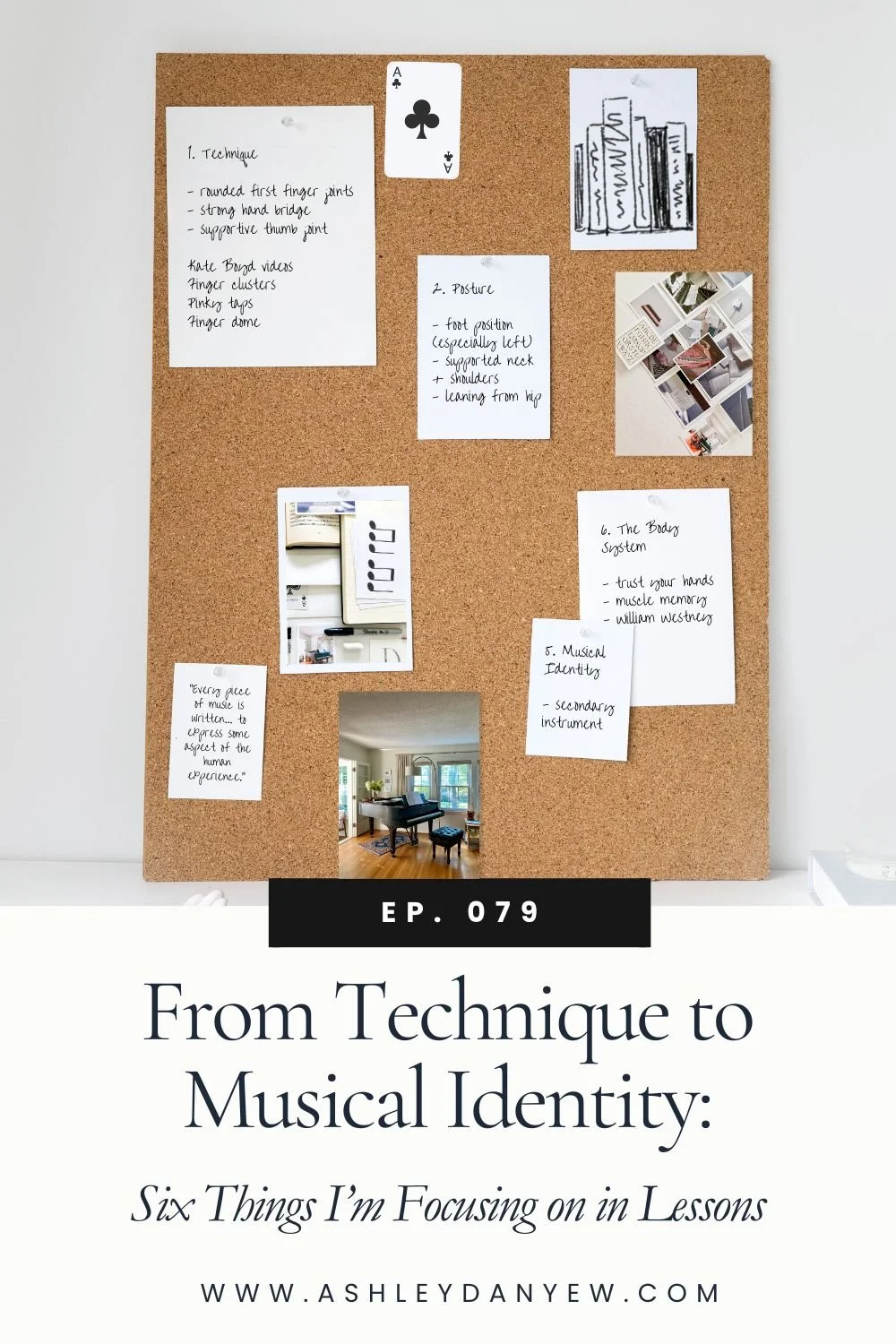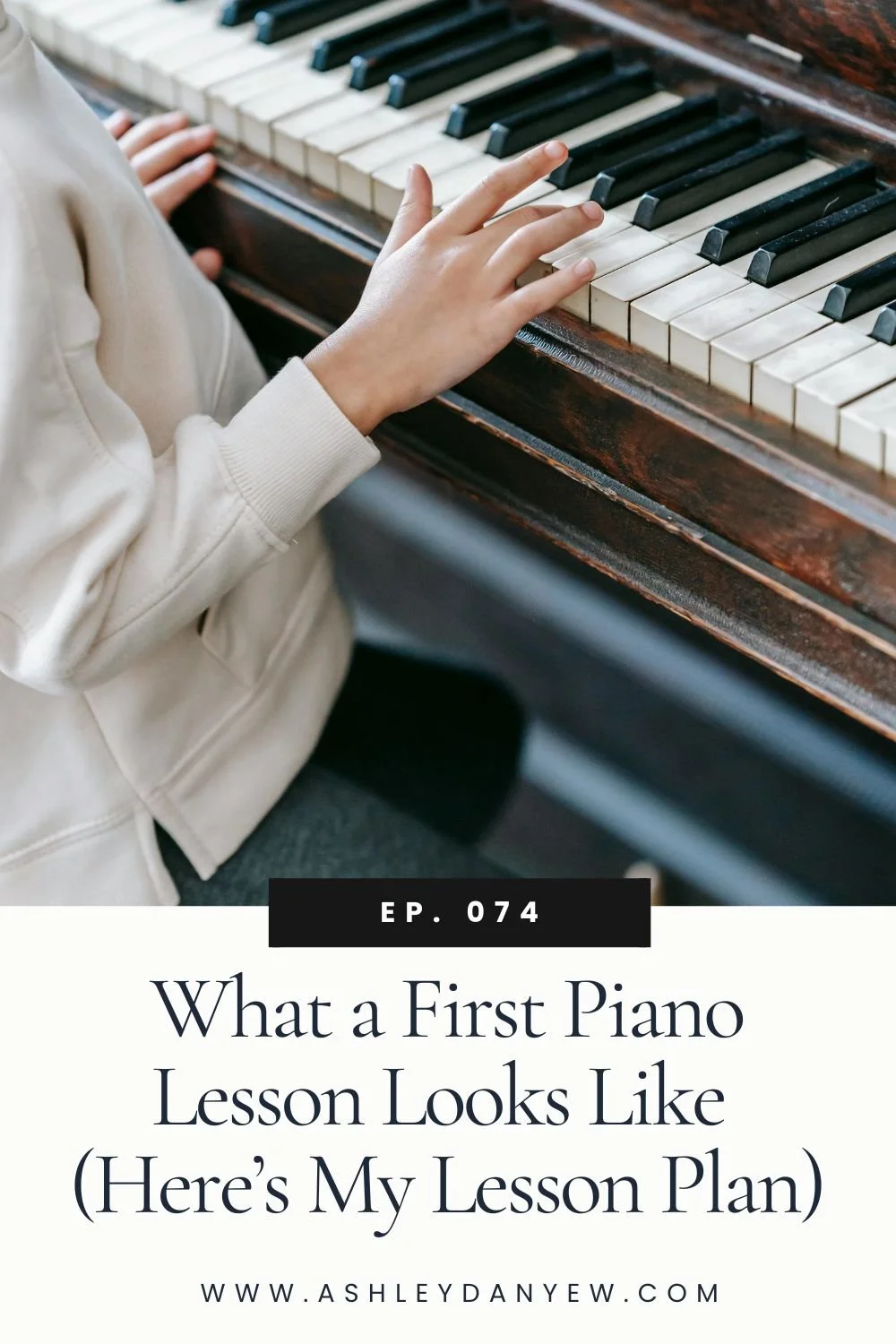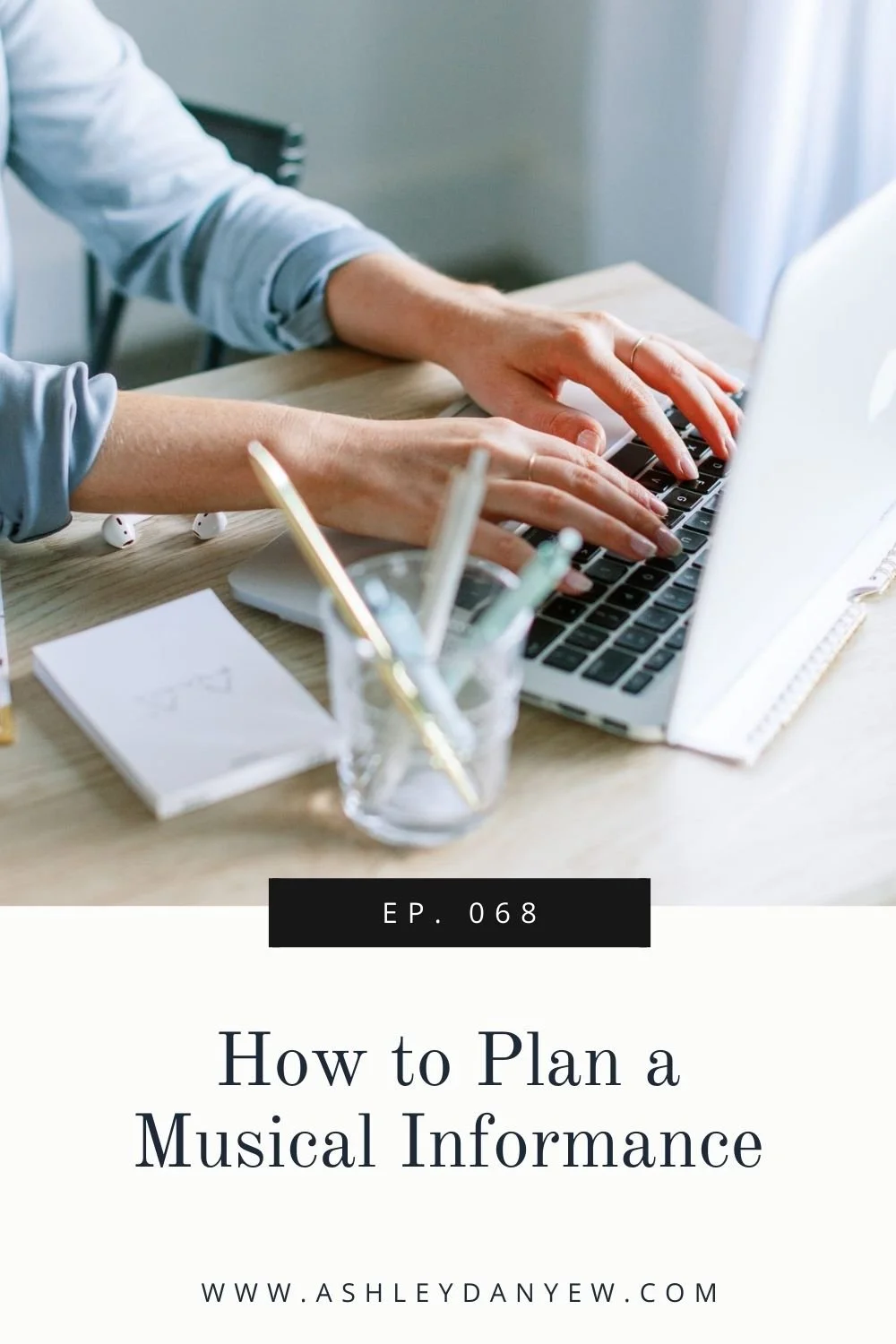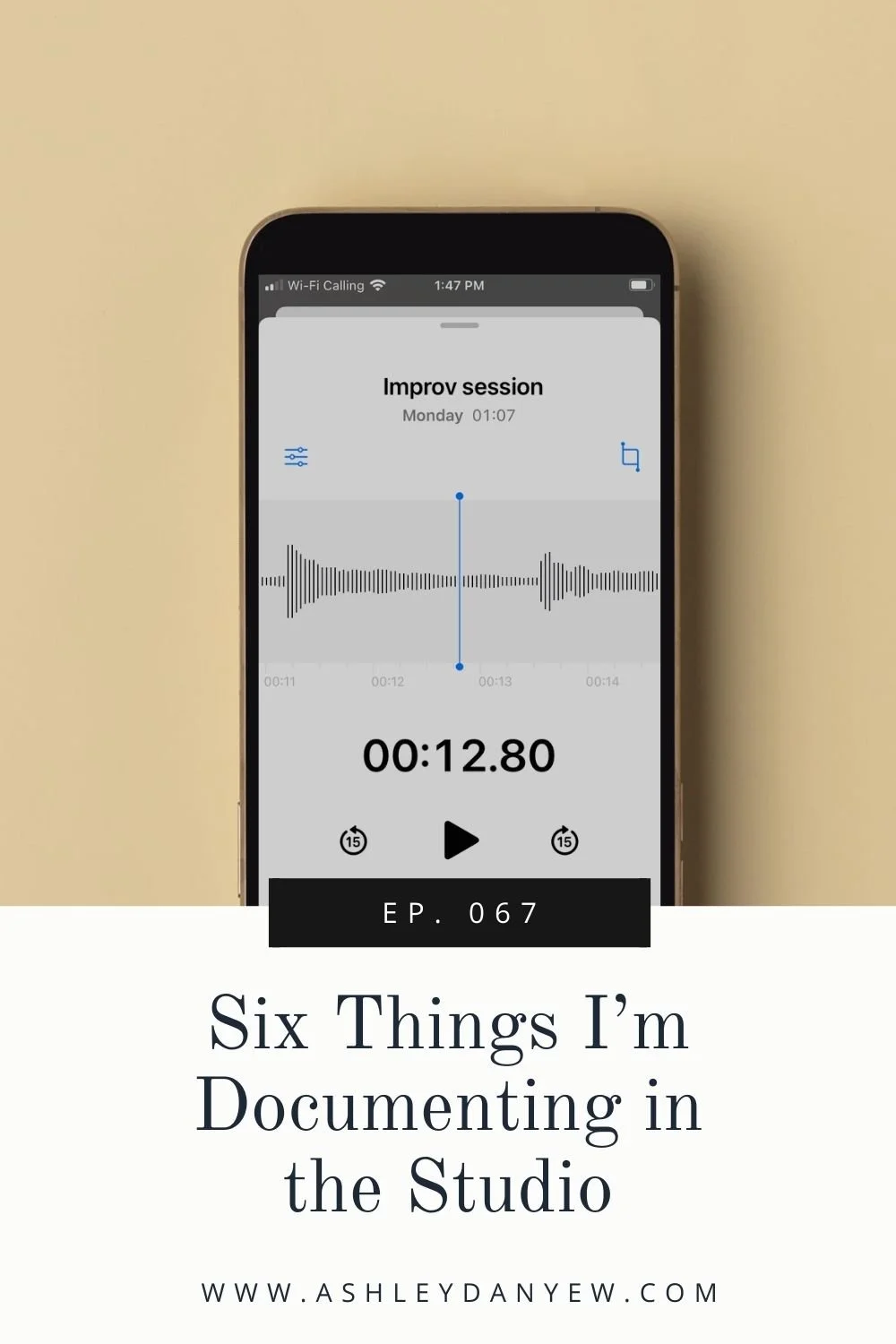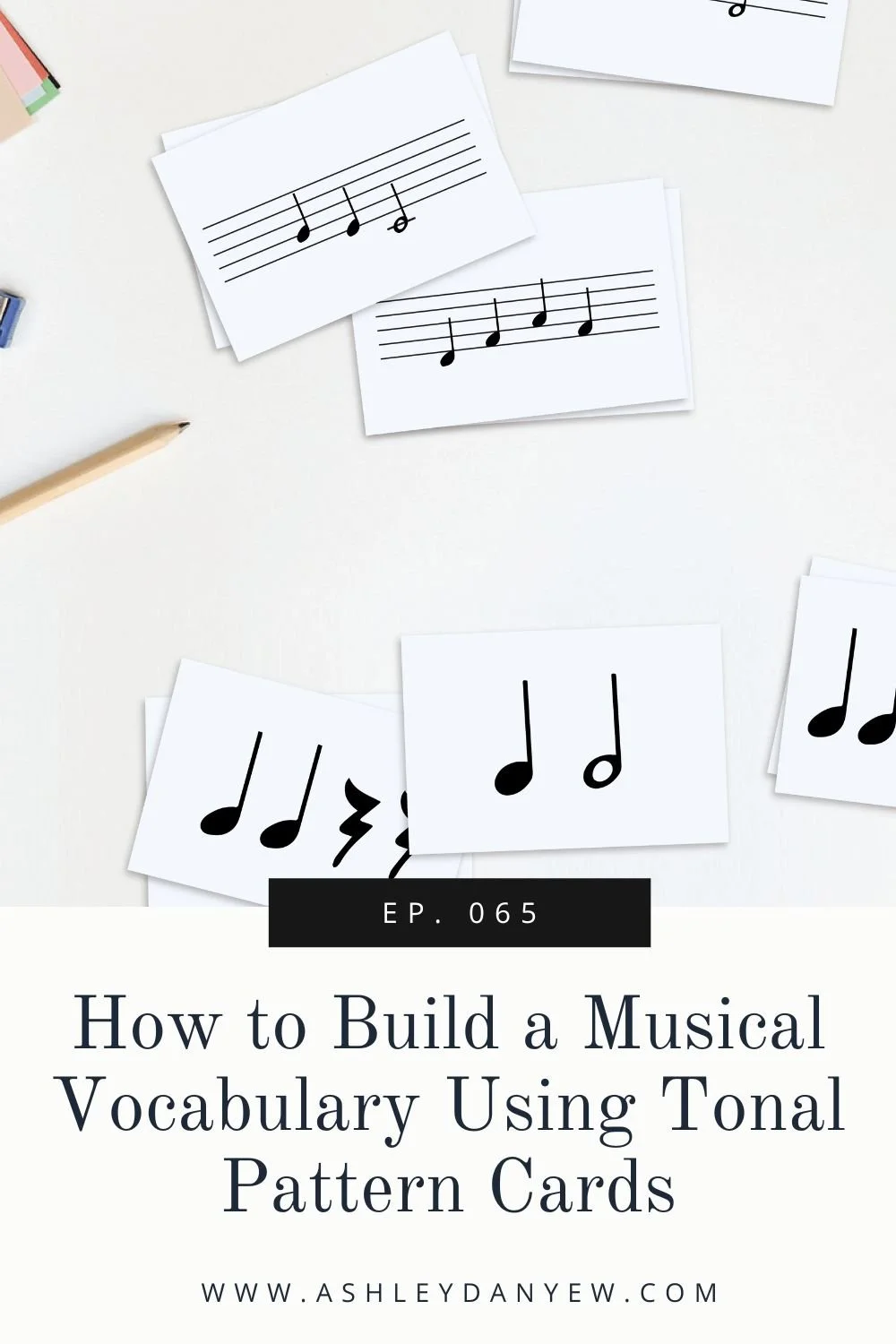Resources Mentioned
*Disclosure: some of the links in this episode are affiliate links, which means if you decide to purchase through any of them, I will earn a small commission. This helps support the podcast and allows me to continue creating free content. Thank you for your support!
Get my free, 7-min. monthly email newsletter—loved by 21,768 musicians & educators
Lessons in Chemistry: A Novel (Bonnie Garmus)
Inspired Piano Teaching (Marvin Blickenstaff)
Ep. 068 - How to Plan a Musical Informance
Ep. 069 - A Musical Informance to Celebrate the Solar Eclipse
Ep. 071 - 3 Things I Learned From Hosting a Musical Informance
Musical Informance Planning Guide for K-12 Piano Teachers
It’s my second full week of teaching. I know some of you have been back to school and lessons for a month now, but I’m still getting my bearings, adjusting to a new schedule, organizing studio classes, and setting my intentions for the year.
This is not a formal practice, but it’s something I sort of subconsciously do to mark the beginning of the new teaching year. I ask myself a few questions:
“What do I want this year to look like?”
“What do I want my students to experience?”
“What do I want to prioritize or focus on?”
“What do I value in the music teaching and learning process that I want to lean into?”
Do you do this, too?
If you’re on my email list, I shared in last week’s newsletter three things I’m bringing with me into the new year drawn from this practice. Today, I’m sharing a few more—7 things to carry into the new teaching year—and I hope this inspires you on your teaching journey.
I’m Starting the New Teaching Year with These 7 Things
I spent some time reflecting, planning, and writing out what I want this new teaching year to hold and I came up with 7 things to share with you. I’ll give a quick, big-picture view first, and then we’ll talk about each one in a little more detail.
Curiosity: A desire to experiment and test ideas, embrace opportunities to try new things, and just play.
Scholarship: Bringing a new depth of research, context, and knowledge to the repertoire I teach and the music learning process.
Connection: Asking more thoughtful questions, creating meaningful experiences, and connecting to the heart of music-making.
Excellence: Developing this habit and being intentional about how I show up every day in my teaching, writing, and creative work.
Space: The gift of time for learning, discovery, and experience; circling back, musical tangents, connections, and playing it again.
Artistry: The ability to paint, color, create, and shape sound expressively.
Community: Learning with others, gleaning insights into the process, finding connection and support and encouragement, and sharing it with others.
Let’s talk about this first one, curiosity.
No. 1 - Curiosity
I’ve been playing with this idea of experimentation and testing ideas for a little while now—perhaps inspired by Lessons in Chemistry: A Novel.
I’ve never considered myself a scientist—it was definitely not my favorite subject in school—but there is an innate spirit of curiosity in scientific inquiry that I think we can adopt in our studios and music teaching. Observations, discoveries, problem-solving, asking questions and studying the results. Approaching challenges with a sense of wonder and intrigue.
There’s this deep level of interest in the experiment and the outcomes. That’s what I want to cultivate in my students this year.
No. 2 - Scholarship & Research
If you’ve been following me for a while, you know that I value scholarship, data, and time-tested approaches. I’m not a fan of surface-level or shallow learning experiences. Instead, I think as teachers, we owe it our students to prioritize breadth and depth, to open our eyes and ears to what’s possible, to develop comprehensive musicianship, explore things from multiple perspectives, and experience the innate joy of creating beautiful music.
No. 3 - Connection
Children grow up so quickly—I’m amazed at how much students change during the school year and even more over the summer and as they begin a new grade. Even just 2nd grade to 3rd grade is such a big change. I want to make sure that our time together each week is not just about notes and rhythms and fingering but also about connection. I want to take time to personally invest in each student, get to know their interests, and hear stories from their day.
Often, this is a great way to bridge our conversation to something musical—connecting Irish dance to a piece we’re playing, art projects to the colors of musical expression, and fractions from math class to time signatures.
So, that’s what I mean by connection.
No. 4 - Excellence
This is always somewhere on my list. When I was a grad student at Eastman, I learned the Latin word meliora meaning “ever better.” The school adopted this as their motto in 1851 and it’s infused into everything they do: From independent faculty projects and collaborations to weekly studio classes to national and international conferences and events. They set a standard and an example for what excellence looks like in practice, because it’s an ongoing commitment. And this is the example that we had as students.
Aristotle wrote:
“We are what we repeatedly do, therefore, excellence is not an act, but a habit.”
I want to model this in my work and instill this in my students.
No. 5 - Space
At the end of the summer, we spent a week in northern Italy with Steve’s family. My brother-in-law is in the Air Force and has been stationed there for the last three years. One thing I always notice when I visit Europe is how different time feels. There’s a slower pace—sometimes, a feeling of timelessness, or just that you’re not always aware of what time it is—and how freeing that is.
So often in lessons, I find myself with a list of 8-10 things I want to accomplish with a student: warm-ups and technique, sight-reading and rhythm, new and review pieces, aural skills, improvisation, musical concepts. It’s easy to feel rushed or hyper-aware of the time because everything happens in 3- to 5-minute increments. We’re constantly assessing: “Is it time to move on? Can I fit one more thing in?”
Instead, I want to adopt this European feeling of spaciousness and give my students the gift of time to explore and discover and create without feeling like we have to go right on to the next thing.
Now, hear me when I say, this does not mean I will stop planning lessons or plan fewer activities. I will still plan each individual lesson every week and I will likely still plan the same number of activities, but I want to approach it differently. I want to be more present and focused on the experience.
If a student makes a discovery, I want to make sure we acknowledge that and they have the opportunity to truly experience it. If something comes up for us to play by ear or improvise or connect to something else, I want the flexibility to pursue that in the moment and swap out something on my lesson plan.
So that’s a long explanation of what I mean by number 5, “space.”
No. 6 - Artistry
I’ve been reading Marvin Blickenstaff’s book, Inspired Piano Teaching. Early on, he writes:
“Let it be proposed that the goal of our teaching is to produce artists. . . .Students who see, hear, and feel beyond the notes on the page, shaping the sound to a highly expressive end. We do not teach to entertain, and our teaching goes beyond the education of intervals, efficient reading, and command over various scale routines. We teach to give students the experience of artistry, the experience of communicating emotion.”
That really resonated with me, especially the part about not teaching to entertain.
I could get on a soapbox about the number of teaching resources out there that prioritize fun and entertainment over music learning, experience, and expression and the number of teachers who let students dictate their curriculum and lesson plans, but I’ll save that for another day. 😉
On the topic of artistry, I want to say how important it is to acknowledge and value the artistic side of your work as a music teacher. You’re helping your students learn to see, hear, and appreciate beauty through sound and how to create that beauty in the world themselves. That is such a gift. Please don’t minimize or dismiss this—your work matters so much.
In practical terms, Marvin explains that artistic performance starts with three things: dynamics, balance, and breath.
Dynamics in the shaping of each phrase, moving the sound forward, bringing out the character and emotion of each section.
Balance between melody and accompaniment.
Breath to create space between phrases, punctuation in rhythm, and communicate that music is a living, breathing thing.
So that’s a little insight into musical artistry—something I’ve been thinking about recently.
No. 7 - Community
Community has always been central to my work as a musician and teacher—working at the community level in churches and community music schools; building my own private studios; starting a chamber music festival in a small town in MA after grad school; presenting lecture recitals, a preschool music concert, collaborative recitals, and a community sing; connecting with other musicians and teachers through virtual work retreats (we have two scheduled this fall: One later this week and one in mid-October. Visit ashleydanyew.com/workretreat to sign up!); and creating community for my students and their families through studio classes and musical informances.
I talked about planning and hosting a musical informance for my studio back in Ep. 068, 069, and 071.
I also created a 37-page, in-depth musical informance planning guide & repertoire-planning resource for K-12 piano teachers. It’s full of ideas and resources to help you plan your first (or next) informance including eight ready-to-use themes with leveled repertoire lists + ideas for related musical activities, 17 thought-provoking questions to ask your students, a 12-week planning timeline + checklist, email scripts to send to the parents, and more. See everything that’s inside >>
In my studio this year, community looks like planning six small-group studio classes (elementary, late elementary, and intermediate at the moment) and organizing another musical informance in March, like we did last year. I’ll tell you secretly that I really created the Musical Informance Planning Guide for myself, so I will definitely pull it out this fall as I think about a theme and repertoire selections for the spring.
Plan, organize + host a memorable musical informance for your piano studio this year.
Inside, you’ll find everything you need to plan, organize, and host a musical informance:
How to structure + facilitate your informance + teaching tips
Eight ready-to-use themes with leveled repertoire lists + ideas for related musical activities
17 questions to ask your students
A 12-week planning timeline + checklist
Email swipe copy
and more!
Closing
So that’s it—7 things to carry into the new teaching year. I hope this inspires you. If you haven’t already done so, I encourage you to reflect on the year ahead and think about what you want it to look like. Your list of things or your definitions of each one may vary from mine and that’s how it should be. We’re always evolving as teachers and as such, so should our areas of focus.
I’d love to hear from you—
What one thing stands out to you the most from this list? As a reminder, the 7 things were:
Curiosity
Scholarship
Connection
Excellence
Space
Artistry
Community
Let me know which one speaks to you the most in this season.





